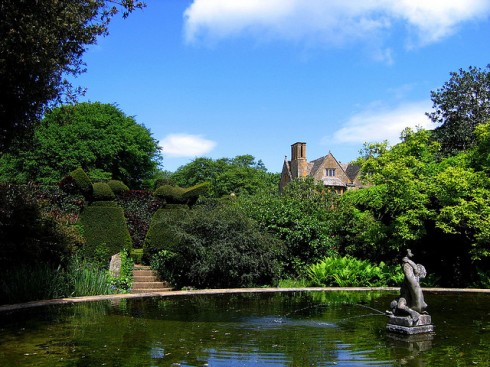ONE EVENING LAST WEEK, I attended the first-ever public lecture at the Brooklyn Botanic Garden’s new Visitor Center — a helix-shaped, mostly glass structure with a planted roof that I had been prepared to dislike for its modernity, but have actually found welcoming. The talk was given by Glyn Jones, head gardener at England’s famed Hidcote Manor in the Cotswolds, a 10-acre Arts & Crafts-era garden with all the classic English-gardening tropes: blowsy borders, ancient hornbeam hedges, bird-shaped topiary, a white garden, everything off the all-important “central axis.”
Can you tell from my tone that I’m slightly disenchanted with the classic English garden, having steeped myself in Japanese-gardening books all winter? It’s also a result of my trying valiantly and never succeeding to emulate those colorful flower borders in my own sun- and deer-challenged gardens. Yes, there’s an element of sour grapes here. My tulips have always been eaten, either by deer or squirrels, while Hidcote has 18,000 of them, freshly planted each year in varying color schemes. But I did enjoy Mr. Jones’ gossipy talk, and the experience of sitting with a like-minded roomful of people who love gardens.
Hidcote was one of the first properties to become part of England’s National Trust in 1948, though Jones had little good to say about the National Trust. He thinks Hidcote should cut loose, save the annual dues, and publish its own guidebook and website (it can’t be worse than the National Trust’s Hidcote page, which inexplicably has no photos).
Once weedy and overgrown, Hidcote is now restored to perfection, with 12 full-time gardeners and close to 200,000 visitors a year. It was purchased in 1907 by a Mrs. Winthrop, an American born in — of all places — Brooklyn! She was a theater buff who bought the property because of its location 10 miles from Stratford-on-Avon. Her son, Lawrence, went on to develop the gardens, going on ‘botanizing expeditions’ in the 1930s to China, Burma, and South Africa, and bringing back hundreds of hitherto-unseen (in the Western world) species.
Always anxious to cull tips and ideas for my own gardening efforts, I listened attentively for such pronouncements as “We hate bare soil at Hidcote” (for aesthetic reasons and also because abundant perennial plantings suppress weeds). “We hate corners. Fill them up with pots.” I’m for that. “Soften hard architectural lines with a ‘jungly style’ of planting.” By mid-summer, abundant perennials obscure the edges of Hidcote’s grass and gravel paths, though I wouldn’t exactly calll Hidcote’s plantings ‘jungly.’
I perked up when Jones described Hidcote’s “natural or wilderness areas with a different style of planting,” including astilbes, ferns, skunk cabbage, irises, rogersia, and candelabra primulas — things that thrive in shade and damp. I can see those things working at my new property on Long Island (closing three weeks from today!)
Unfortunately, I don’t think Jones’s photos did full justice to the place and, as I mentioned, the National Trust is no help. The illustrations in this post are from UGArderner’s Flickr photostream. Thank you for sharing, UGA.





